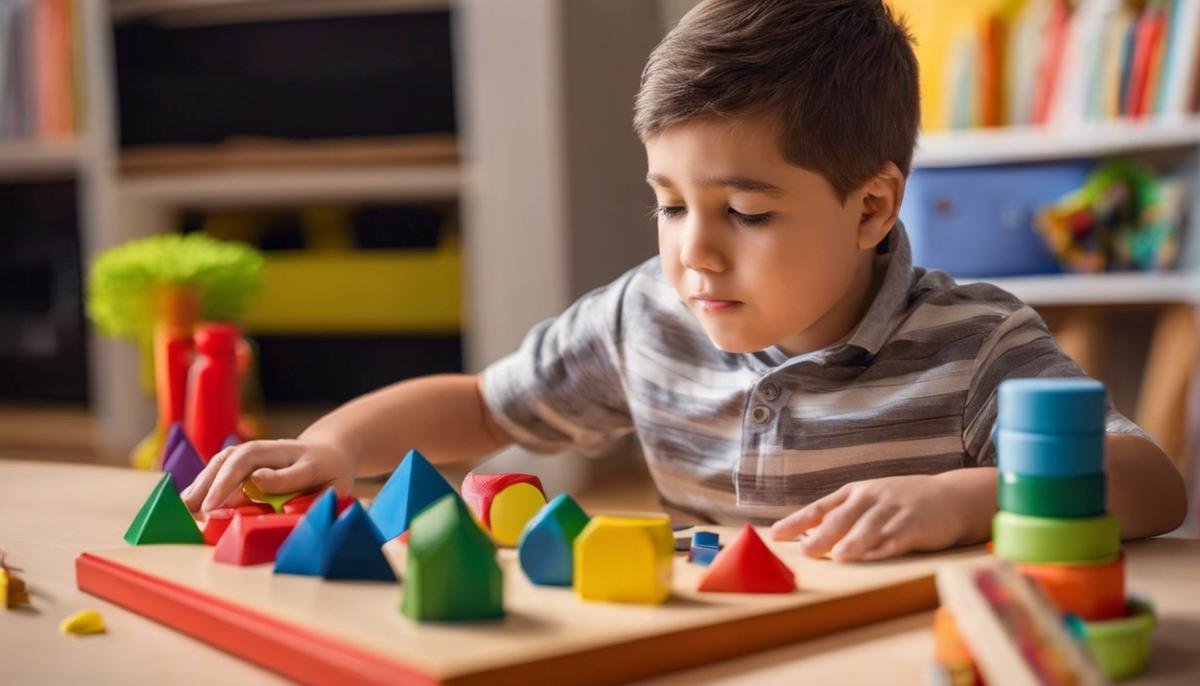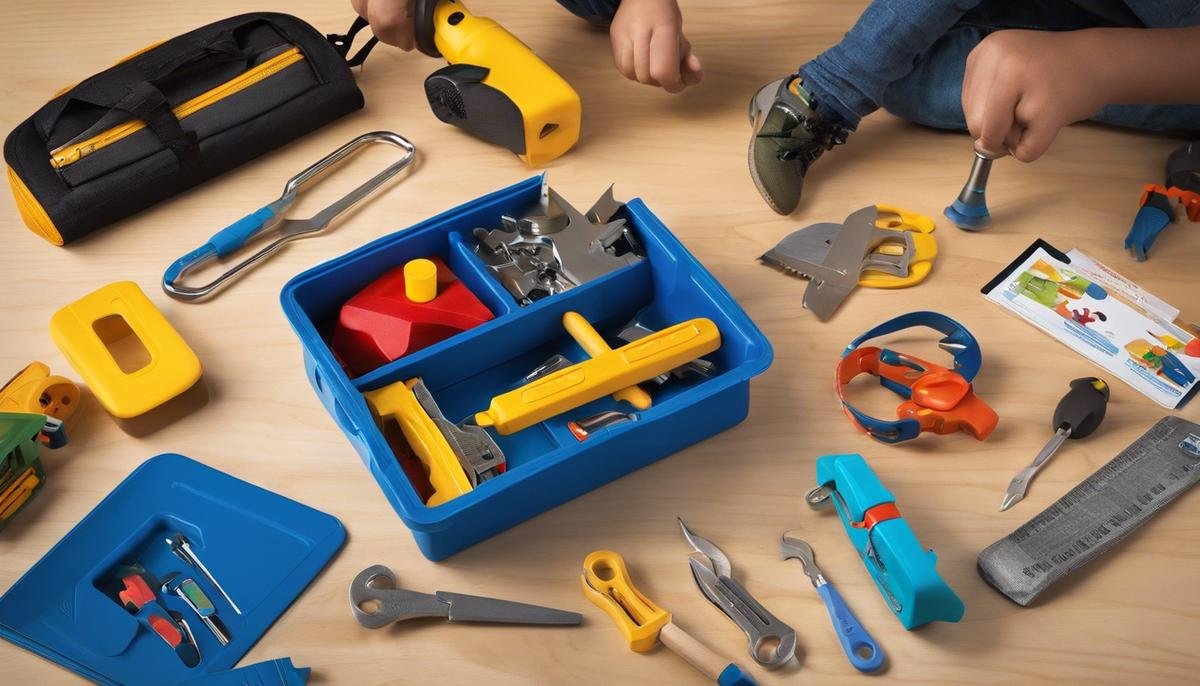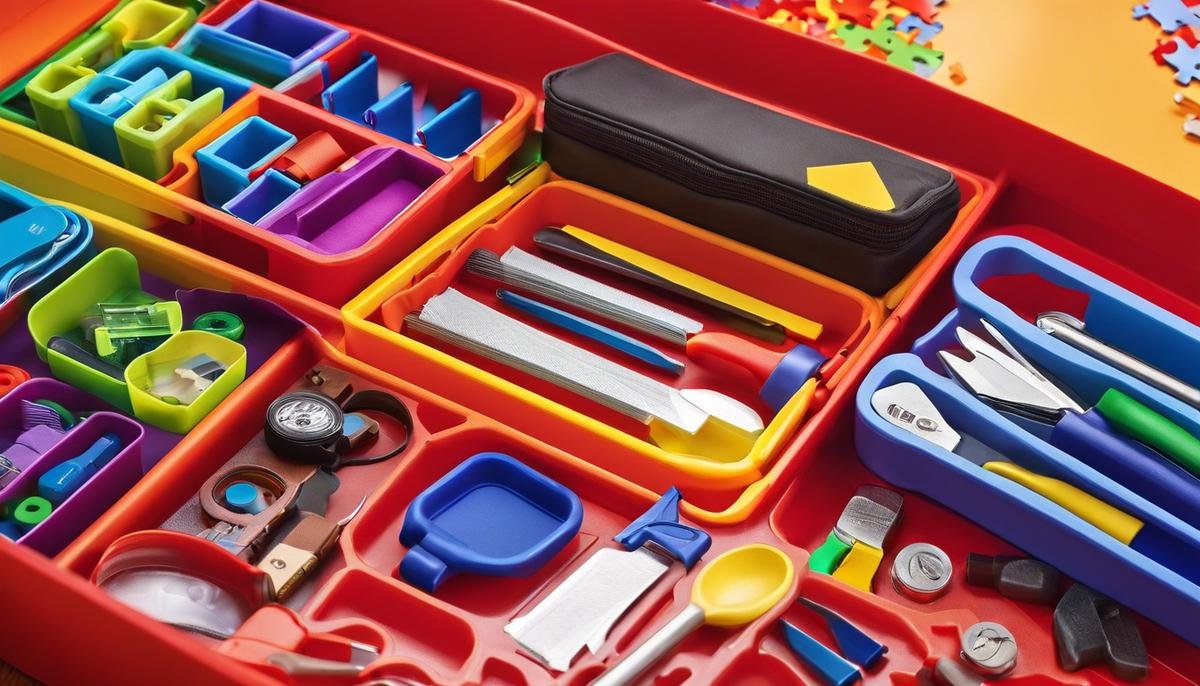
Navigating the world with autism presents unique challenges that extend into the realm of personal safety. Individuals on the autism spectrum may experience the world differently due to sensory sensitivities, may have difficulties with communication, and may not always react to dangerous situations with the urgency required. Understanding these unique safety needs is not just crucial but a responsibility we carry for our loved ones with autism. This essay aims to shine a light on the multifaceted nature of safety concerns in the autism community and offers a strategic approach towards crafting a comprehensive Autism Safety Toolkit. By doing so, we can ensure that individuals with autism are equipped with tailored safety measures that respect their needs and empower them to navigate their environments with greater assurance.
Understanding Autism and Safety Needs
Crafting an Autism-Friendly Safety Toolkit: Why Understanding Matters
Creating a safe and accommodating environment for our kids is a mission every parent holds dear. When it comes to our little ones on the autism spectrum, understanding their unique world is not just a loving gesture – it’s vital for their security and our peace of mind. Let’s dive into why grasping the nuances of autism is the first step in assembling an effective safety toolkit for these incredible kids.
Children with autism experience the world differently. Their perceptions and reactions can be distinct from what we might expect. Recognizing this is key to preventing potential hazards and ensuring that safety measures speak their language. Imagine a toolkit tailored just for them, filled with resources and strategies that align with their specific needs. How comforting is that thought?
Communication is a huge part of this equation. For some on the spectrum, nonverbal cues are their primary language, while others might express themselves in unique ways. By tuning into these communication styles, you can craft personalized strategies. Picture visual safety aids that resonate more deeply than words might, or a custom-made sign language that becomes a special bond between you and your child.
Sensory sensitivities are also a major factor to consider. Bright lights, loud noises, or certain textures can be overwhelming, potentially triggering a flight response or meltdown. Tools like noise-canceling headphones or calming sensory toys in your safety kit can make all the difference during a stressful situation.
Wandering is another concern that many parents of kids with autism face. With an understanding of what might cause a child to wander – be it curiosity or seeking comfort – a GPS device or identification bracelet becomes more than an accessory; it’s an essential layer of protection in your safety toolkit.
Creating emergency protocols tailored to your child’s comfort level can make practice drills less stressful and more effective. A simple step like introducing them to the local first responders and familiarizing these professionals with your child’s specific needs can go a long way when it comes to real-life emergencies.
Finally, teaching independence within safe limits is vital. Interactive tools that encourage self-help skills not only foster confidence but also build a foundation of safety habits. For example, using a color-coded system can help your child understand danger zones versus safe areas in your home or neighborhood.
At the heart of it all, understanding autism equips you with the ear to hear unspoken needs and the eyes to see the world through a spectrum-colored lens. With empathy as the cornerstone, a safety toolkit becomes more than just gadgets and guides – it’s an extension of your awareness and unspoken love for your uniquely wonderful child. Embrace this journey, and let’s build those toolkits with all the wisdom, patience, and insight our families deserve.

Essential Components of an Autism Safety Toolkit
Oh, the journey of parenting is one filled with love, challenges, and – let’s be real – a whole lot of creativity along the way. For those of us with a special little one who sees the world a bit differently due to autism, our parenting toolkit looks just as unique as their beautiful minds. It’s not just about managing sensory sensitivities or setting up emergency protocols; it’s about filling our kit with those must-haves that add an extra layer of protection while nurturing growth and independence.
First things first, a medical alert card can be a true lifesaver in situations where communication barriers arise. It’s compact, easy to carry, and it can speak volumes when our kiddos might be overwhelmed or non-verbal. This card should have key personal information, medical needs, emergency contacts, and any other essential details that can quickly inform first responders or helpful strangers.
Speaking of being out and about, a trustworthy pair of noise-cancelling headphones finds its rightful place in our autism safety toolkit. Whether it’s to soften the blow of unexpected loud noises during outings or to provide a comforting escape from sensory overload at home, these are a godsend.
But let’s not forget about the home front! Sure, we’ve talked about managing sensory sensitivities, but have we stocked up on safety locks and alarms for doors, windows, and cabinets? These nifty gadgets help prevent unsupervised wandering and keep household dangers securely out of reach. Just remember, it’s about balance: safe but not restrictive.
Now, how about some calming aids for those tough moments? Weighted blankets, stress balls, or fidget tools serve as perfect companions to soothe and give our children an outlet for their stress. They’re like a warm hug or a friendly squeeze that says, “You’ve got this” without having to say a word.
One might not immediately think of it, but a simple set of visual aids – think picture schedules or choice boards – deserves a spot in the toolkit. These help demystify daily routines, provide structure, and can empower our children to make choices and communicate needs in a way that speaks to them. Ah, the beauty of visuals!
And, although we hope the occasion never arises, it’s crucial to have a first aid kit tailored to our child’s specific needs. This goes beyond the standard band-aids and antiseptics; think about any special medications, creams, or supplies that could quickly turn a potential crisis around.
Last but absolutely not least, is the power of a strong support network. Alright, it’s not exactly an ‘item’ per se, but having a community of family, friends, therapists, and fellow parents in our corner gives us a foundation that’s rock solid. After all, when it comes to parenting, it really does take a village – or in this case, a caring and insightful network.
Remember, the autism safety toolkit isn’t just about the gear and gadgets; it’s a living, breathing compilation tailored to a family’s unique circumstances. It grows and adapts just as our children do. So let’s keep our hearts open, our minds sharp, and our toolkits ready. Here’s to the ever-evolving adventure of loving and nurturing a child with autism. Stay safe, stay prepared, and keep thriving in this incredible journey.

Implementing and Practicing Safety Protocols
As dedicated caregivers, it’s crucial to not only equip our homes with the tools necessary to keep our children with autism safe but also to ensure that these safety protocols become a seamless part of our daily routines. Practicing safety measures regularly can significantly improve the effectiveness of an autism safety toolkit and can make all the difference during unexpected situations.
The Power of Routine and Practice
Children with autism often thrive on routine, as it provides a sense of security and predictability. Incorporating safety practices into the daily schedule can help normalize these protocols, making them a familiar and comforting part of your child’s day-to-day life. For instance, use visual aids to integrate safety checks into morning or bedtime routines, allowing your child to actively participate and understand their importance.
Repeated Drills Create Muscle Memory
In the same way athletes train to perfect their craft, children with autism can benefit from repeated safety drills. By practicing how to respond to a fire alarm, lock a door correctly, or use a medical alert card, these actions can become an almost instinctual response, engrained through repetition. This muscle memory can be especially crucial during high-stress situations where quick reactions are needed.
Consistent Feedback and Positive Reinforcement
After practice drills or during routine safety checks, providing consistent feedback and positive reinforcement encourages children to continue engaging with the safety protocols. Celebrate successes, no matter how small, with verbal praise or a small reward to reinforce the positive behavior.
Effective Communication through Practice
Regular practice provides opportunities to refine communication strategies. Perhaps through drills or conversations, one might discover that a child is more responsive to certain cues or instructions. This fine-tuning of communication is essential for ensuring that safety measures are understood and can be followed properly.
Updating the Toolkit as Skills Improve
As children grow and develop new skills, the autism safety toolkit may need updating. Regular practice can help caregivers identify when a child may be ready for more advanced safety tools or procedures, allowing the toolkit to evolve with the child’s progress.
Emergent Situations and the Unexpected
Life is unpredictable, and practicing your safety protocols regularly helps prepare for those moments that catch us off guard. An unexpected fire drill at school or a loud noise at a community event can be less distressing if a child has been conditioned to react as practiced at home.
Ingraining Safety into the Fabric of Everyday Life
Ultimately, the goal is to integrate safety into the fabric of everyday life so seamlessly that it becomes second nature, not just to your child, but to the whole family. This integration provides a secure structure within which your child with autism can confidently navigate their world.
By committing to regular practice of our autism safety protocols, we not only sharpen our toolkit’s effectiveness but also empower our children with the skills they need to navigate their environments safely. It’s about creating a proactive, rather than reactive, approach to safety—one where our children are active participants in maintaining their well-being. Let’s keep forging ahead on our journey together, creating a safer, happier, and more secure world for our kids—one practice session at a time.

Empowering individuals with autism with the right tools and knowledge for their safety is not just about preventing emergencies; it’s about offering them the confidence to explore their world with an underlying sense of security. Through understanding the importance of aligning our safety protocols with the unique perspectives of those on the spectrum, creating an autism-specific safety toolkit, and implementing consistent practice of these safety measures, we lay the groundwork for a safer and more inclusive society. Let us move forward with the commitment to continuously evolve our safety strategies as we gain a deeper appreciation of the diverse experiences of those with autism, always with their dignity and individuality at the forefront of our efforts.




